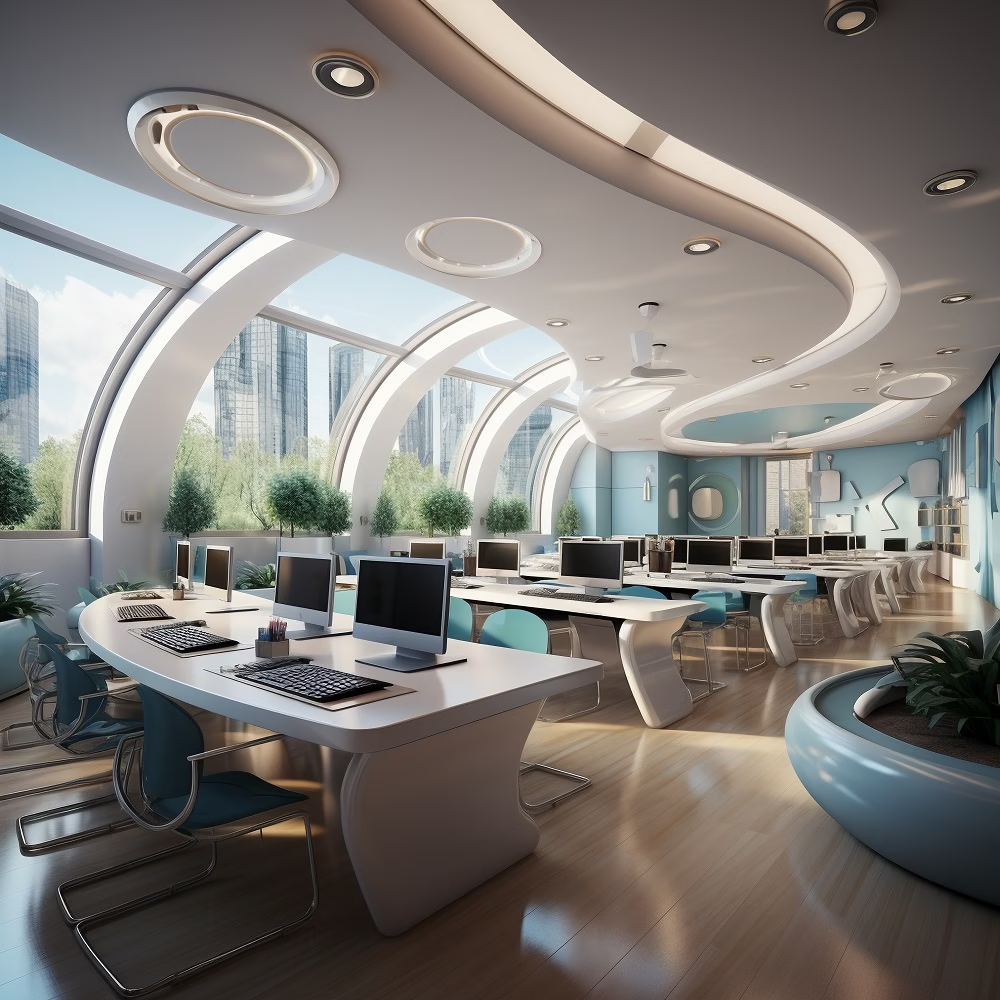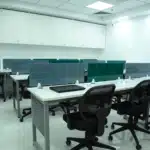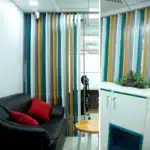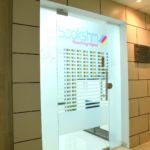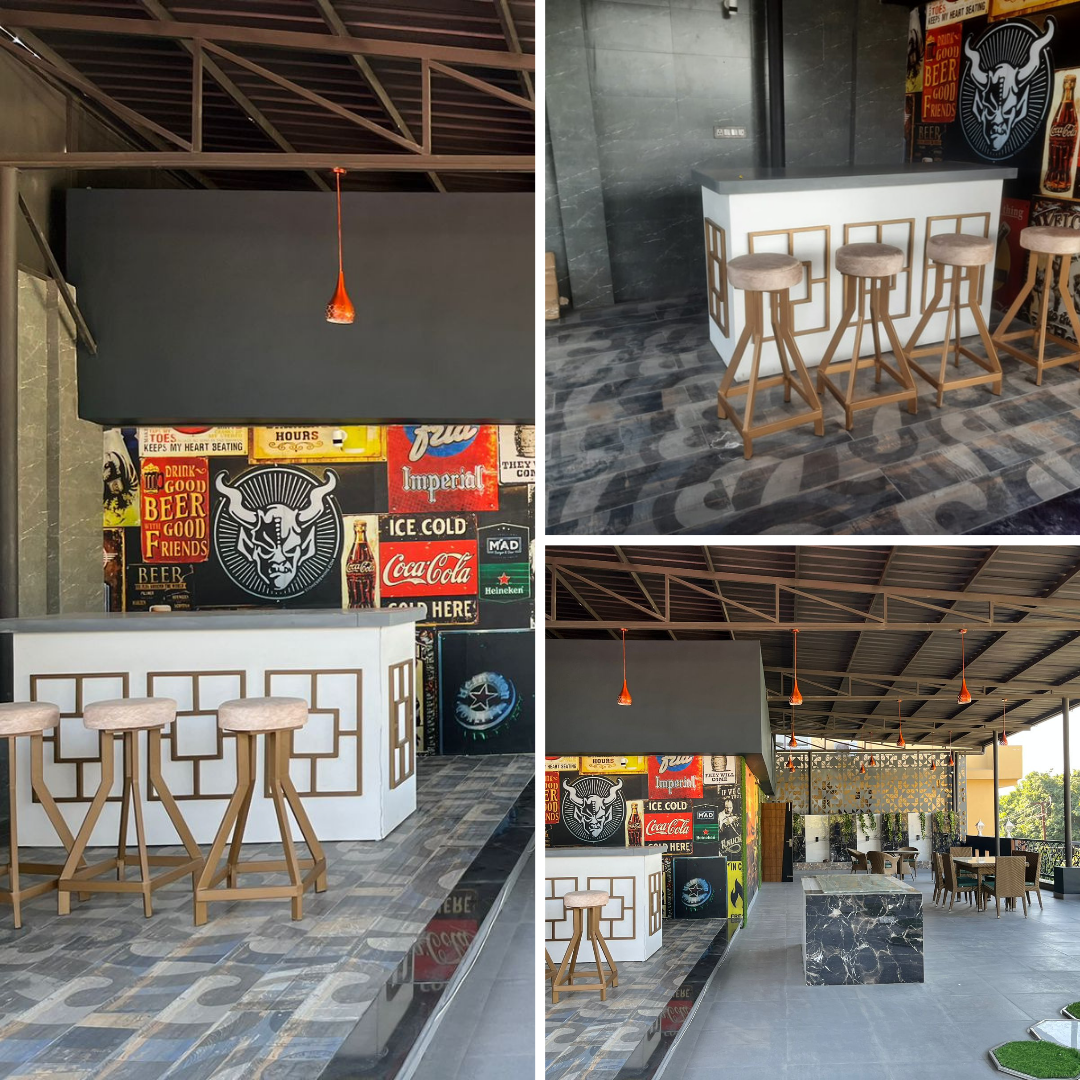Technology in Modern Offices: Improving Comfort and Efficiency
- amodini
- 0 Comments
Offices are no longer just a place with desks, chairs, and paperwork. The rise of modern technology has completely changed how people work in offices. From advanced communication tools to smart systems that improve comfort, technology plays a big role in making workplaces more efficient and productive. Modern offices focus not only on getting work done but also on creating a comfortable environment where employees can feel motivated.
The use of technology in offices is not just about computers anymore. It is about building a digital workplace where employees can collaborate, save time, and work more effectively. Let’s explore how technology has transformed modern offices, improved comfort, and increased efficiency.
Importance of Technology in Offices
Technology is now the backbone of every office. Earlier, offices relied heavily on paper records, physical files, and face-to-face meetings. Today, these have been replaced by digital tools, cloud storage, and online communication platforms. Technology helps in reducing manual effort, cutting down errors, and speeding up tasks.
For example, digital project management software allows teams to keep track of tasks, deadlines, and responsibilities without needing physical boards or meetings. Similarly, online communication tools help employees connect instantly, no matter where they are working. Technology in offices ensures smoother workflow and better organization, which ultimately leads to greater productivity.
Digital Communication Tools
Communication is the most important part of any office. Modern offices use tools like emails, instant messaging apps, and video conferencing platforms to stay connected. These tools make it easier for employees to work with colleagues and clients across different locations.
Video conferencing platforms such as Zoom or Microsoft Teams allow employees to conduct meetings without physically being in the same room. This saves travel costs and time, while also making global collaboration possible. Instant messaging apps like Slack help teams communicate quickly, share updates, and solve problems without delays.
With these tools, offices have become faster and more connected. Employees no longer need to wait for long emails or physical memos to get information. Everything can be shared instantly, which improves efficiency.
Smart Office Technology for Comfort
Modern offices also use smart technology to improve comfort for employees. Smart lighting systems adjust brightness based on natural light, reducing eye strain. Smart thermostats maintain a comfortable temperature in the office without wasting energy.
Comfort plays a huge role in employee productivity. If workers are sitting in a comfortable environment, they are likely to stay focused and motivated. Many offices also use ergonomic furniture, such as adjustable desks and chairs, to ensure physical comfort. Some companies even use smart air quality monitors to ensure that the office air is clean and healthy.
Here is a quick look at some common smart technologies used in offices:
| Technology | Purpose | Benefit to Employees |
|---|---|---|
| Smart Lighting | Adjusts brightness automatically | Reduces eye strain, saves energy |
| Smart Thermostat | Maintains office temperature | Keeps workplace comfortable |
| Ergonomic Furniture | Provides better posture support | Improves health and reduces fatigue |
| Air Quality Monitor | Tracks air quality | Ensures cleaner, healthier workplace |
| Noise-Cancel Tools | Blocks unwanted noise | Helps employees focus better |
This combination of comfort and technology creates a workplace that is both productive and enjoyable.
Automation in Office Work
Automation is one of the biggest contributions of technology to modern offices. Tasks that used to take hours or days can now be completed in minutes using software automation. For example, data entry, payroll processing, and scheduling can all be automated.
Automation not only saves time but also reduces errors that often happen when tasks are done manually. Offices use tools like automated email marketing systems, scheduling software, and chatbots to handle repetitive tasks. This gives employees more time to focus on creative and meaningful work.
Cloud Computing and Data Storage
Cloud computing has changed the way offices store and share information. Instead of keeping everything on paper or local computers, companies now store data on cloud platforms like Google Drive, Dropbox, or Microsoft OneDrive.
This allows employees to access files from anywhere, anytime. It also improves collaboration, as multiple people can work on the same document at the same time. Cloud computing also ensures data security and backup, which reduces the risk of losing important information.
Cloud computing is widely used because it is cost-effective, flexible, and reliable. For modern offices, it is a must-have technology to stay efficient.
Cybersecurity in Modern Offices
With more data being stored digitally, cybersecurity has become very important. Offices rely on strong firewalls, antivirus programs, and multi-factor authentication to protect sensitive information. Cybersecurity helps prevent data theft, hacking, and unauthorized access.
Many offices also provide training to employees so that they understand how to avoid phishing emails or unsafe online practices. Security awareness is as important as using the right software tools.
A secure workplace ensures employees and clients can trust the company with their information.
Virtual Collaboration and Remote Work
One of the biggest changes in modern offices is the rise of remote work. Technology has made it possible for employees to work from home or any location. Remote work tools like Zoom, Slack, and project management apps help teams stay connected even when they are not in the same office.
This flexibility improves employee satisfaction and work-life balance. Many companies now use hybrid office models where employees can work part of the week from home and part from the office.
Telecommuting has grown rapidly due to technology, and it is now a common practice in many industries.
Artificial Intelligence in Offices
Artificial Intelligence (AI) is also becoming common in offices. AI tools can analyze data, generate reports, and even help in making decisions. For example, AI-powered chatbots can answer customer queries instantly, reducing the workload on employees.
AI is also used in hiring processes, where it helps filter applications and find the most suitable candidates. Predictive analytics tools can also help managers plan better and improve efficiency.
Future of Technology in Modern Offices
The role of technology in offices will continue to grow in the future. Offices will become smarter, more connected, and more focused on employee comfort. We may see more use of virtual reality (VR) for training, augmented reality (AR) for design work, and even advanced robots for handling office tasks.
Technology will not replace humans in offices, but it will support employees by making work easier, faster, and more effective. Companies that invest in technology will stay ahead in terms of efficiency and employee satisfaction.
Also Read:
- What Is a Mood Board in Interior Design?
- What Is Modern Classic Interior Design?
- What is Green Interior Design?
- What Are the Different Materials Used for Interior Design?
- Is Interior Architecture the Same as Interior Design?
Conclusion
Technology in modern offices is about much more than computers and internet connections. It is about creating a workplace that is efficient, comfortable, and ready for the future. From smart lighting and ergonomic furniture to cloud computing and AI tools, technology touches every part of the office environment.
The main goal is to help employees work better, stay comfortable, and achieve more in less time. Offices that adopt technology not only improve productivity but also create a happier and healthier work culture.
By embracing technology, modern offices are preparing for a future where work is smarter, faster, and more connected than ever before.

